On-page SEO is optimizing a page on your website, especially its title structure, subheading structure, URL, images, videos, paragraph structure, content quality, and originality. If you want your website to rank high on Google, you should pay attention to on-page SEO.
If you want your website to show high performance on every page in the search engine results pages, you should also carry out some optimizations specific to your pages. After technical SEO, the most important area on your website is on-page SEO.
If you don’t know how to do on-page SEO, you can read our article. We have given very detailed details about on-page SEO in our guide. At the same time, a detailed on-page SEO checklist is waiting for you in our article.
What Is On-Page SEO?
Most people have basic SEO knowledge. They often think that On-Page SEO is just about placing keywords on a page. Keywords are critical to SEO. However, different criteria are important in the On-Page optimization checklist. Let’s now take a closer look at the on-site SEO checklist and important factors. These checklist SEO factors are as follows:
- Keywords
- Links
- Visual contents
- User experience (UX)
- Title tags
- H tags
- Contents and content length
These are the key factors for On-Page SEO. It is necessary to understand these criteria that are important for On-Page SEO checklist correctly. If you optimize them well, you will see how well your site will rank in search engines. You may also make it easier for people to find you this way.
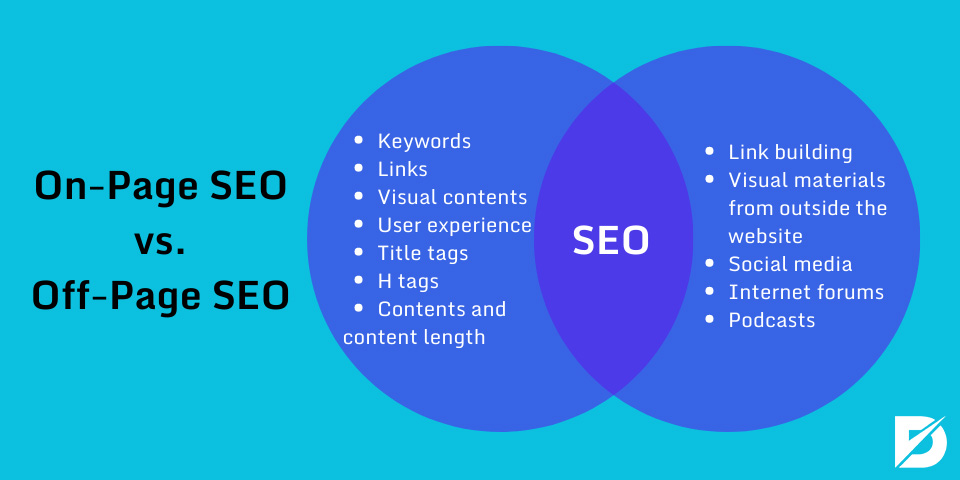
In fact, there are two basic factors in on page SEO activities that work for your pages to rank well. These are On-Page and Off-Page SEO optimization. Our focus will be On-Page SEO techniques. You need On-Page SEO optimization for your content to rank better in search engines and get more traffic. SearchMetrics was analyzed in 2015. This analysis includes the rates of factors that are effective in On-Page SEO optimization. According to this analysis, the two most important factors are related keywords and internal links.
Now, let’s show you how to do an On-Page SEO check and optimization step by step. You may optimize your web pages well just by following this on page optimization checklist.
Performance
You need to ask yourself some questions to improve your site’s performance. If you can’t answer these questions, don’t worry. You can use Dopinger’s Website Analyzer tool to learn how is your website’s performance.
If you want to analyze a web page, you should first monitor its performance. You should know what metrics to look for when tracking your web page’s performance. Below, we will explain what you should look for in the performance section.
- First, you should use a tool to analyze performance. Dopinger analysis tools can help you with this. You can also use tools such as Google Search Console and Google Analytics to analyze on-page SEO performance.
- Additionally, you can use some paid tools, such as Semrush and Ahrefs, to analyze on-page SEO performance.
- When measuring the overall performance of your website, you need to carry out the analysis process on many topics, such as site opening speed, content originality, title structure, visual quality and videos, and SEO-friendly URL structure.
We explain one by one the issues you should ask yourself when analyzing website performance;
Do you follow your pages with Google Analytics?
If you want to analyze the performance of your web page, you should use a tool for this. One of the most effective tools for tracking web page performance is the Google Analytics tool. This tool was developed by Google for free.
The Google Analytics tool has many metrics that will allow you to analyze the behavior of visitors to your web page. With this tool, you can get information about your current visitors and the expectations of your target audience.
Google Analytics alone is not sufficient in the performance analysis process. Additionally, there are many free or paid tools you can use. You can use tools such as Google Search Console, Google Page Speed, and Google Mobile Compatibility Test as free tools. As for paid tools, Semrush and Ahrefs may be the most popular options.
Are you following your primary keywords?
If you want to track the success of your web page, you should definitely analyze the performance of primary keywords. However, you need to have a certain level of knowledge to follow primary keywords.
If you track keywords, you can get an idea about your web page’s performance. First of all, Semrush and Ahrefs will be good choices for you to follow the keyword status. These tools allow you to track your keyword ranking and performance. Additionally, they also help you discover keyword gaps.
You can also track keywords with some free tools. In this way, you can monitor the performance of all your keywords without allocating a budget.
Scanning and Indexing
Scanning and indexing are two important factors that should not be ignored.
In order for a web page to rank on search engine results pages and reach potential followers, it needs to be crawled and indexed. The working system of search engines is to first discover and crawl a page, then index it, and then rank it.
You can track the crawling and indexing status of a web page from your Google Search Console panel. You can also check whether there are crawling errors on your web page and review suggestions for resolving existing errors.
If your web page is not crawled, you can ask Google to crawl your web page by entering the page URL from the Google Search Console panel.
Can your pages be crawled?
If Google spiders cannot access your page, your pages cannot be crawled. Also, Google will not index you. Also, the presence of the Nolndex tag in the Robots.txt file is a matter of concern. The presence of this tag is an obstacle to the crawling and indexing of your pages. If you have noticed that a page is not indexed, you should first check your robot.txt file.
You may use the RankSider tool to check whether crawlable for your pages. After you enter the URLs of your pages, click on send. That shows what obstacles your page has in terms of crawlability. For page accessibility, you may learn how to do SEO analysis with Screaming Frog.
Are you sure that your page is indexable?
The first step to ranking on Google well is to have a crawlable page. The next step is to be sure that Google is indexing your page, indeed. There is a great way to check if your page is indexed. This way, copy your URL and paste it into Google. You may find that your page is not indexed when you search the page URL on Google. There are a few things you can do in such a situation. First, check if you are using the noindex tag. You should also make sure that there are no errors due to the site structure. You may find the most common errors in the site structure and their solutions online. If there are no errors, or you have fixed the errors, you may index your page. You may do this on Google Search Console.
Keywords
Without keywords, you won’t be receiving much traffic.
If you want to attract traffic to your website, you should first focus on keywords. Google accepts the expressions that users type in the search bar as keywords and ranks the results in this query according to certain criteria.
Keywords are the main thing that reveals that the content on your web page is relevant. You should use keywords with high search volume on your page. At the same time, you should develop your content with auxiliary keywords in addition to the keyword.
When analyzing keywords, you can use Google or Google Keyword Planner. You can also use many paid tools such as Keywordtool, Semrush, and Ahrefs. Ahrefs gives you the opportunity to make a certain number of queries daily.
So, make sure you ask yourself these questions.
Are you sure that you have the correct keyword targeting?
Some people have exaggerated dreams about keyword targeting and ranking. A new or non-authoritative site may aim to rank first in basic keywords with high competition and search volume. Instead, it would be more realistic to targeting in keyword groups called long-tail or trunk. Besides, the success rate it will provide in these two types of groups is quite high. There are some tools you may take advantage of in keyword research. These are tools like Google Keyword Planner and Google Trends. You may make more accurate and realistic targeting using these tools. You may learn how to use Google Trends in keyword research online. SEO lists can help you with that.
Are you targeting the same keyword on multiple pages?
Create a table when doing keyword research. Later, when you create content targeting a keyword, indicate it in the table. There should be only one piece of content on your website for each keyword.
If you target a keyword on multiple pages, this creates a duplicate content problem. In this case, search engines may think there is duplicate content or may not know which page to rank. In this case, neither page reaches the desired place in the ranking results.
If you have more than one page with similar content, you can use the canonical tag to tell Google which page it should take as authority to prevent duplicate content from appearing.
Are your pages for search purposes?
Search intent is shaped around four fundamentals. These are:
- Getting information
- Comparison
- Transactional (Like gaining backlink)
- Surfing
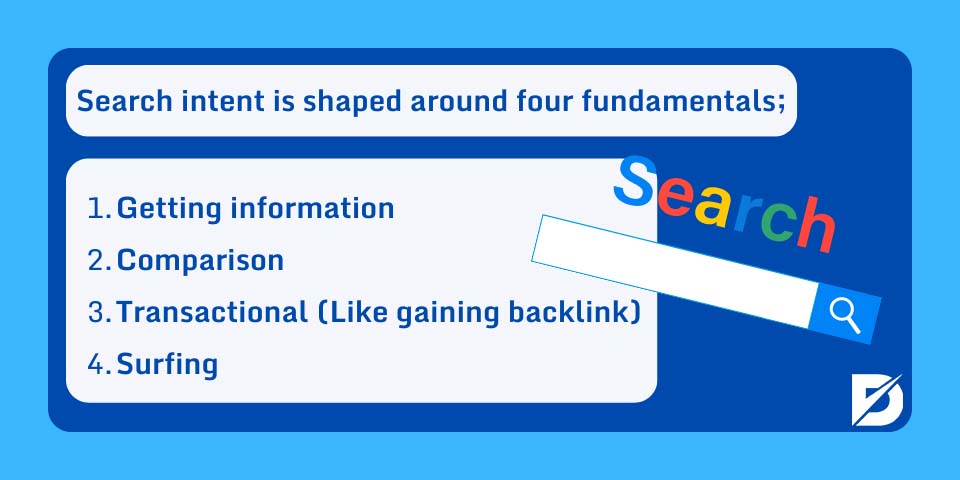
Understanding the purpose behind your target keyword will determine how you will structure your page. If you are going to create content as follows, you must create your content around the purpose of informing. These contents are:
- How to made it?
- What is it?
- How to use it?
This situation is the same for e-commerce sites. The user may have searched your site for information about products and services. If so, the user is not yet ready to purchase the product. Because the user has not yet completed the research phase, this user is at the beginning of the journey to become a customer. You must be aware of this. That’s why you need to configure your page as an educational resource. If you complete this step well, this journey will go to the purchasing phase. For this, you must take advantage of the power of the call to action.
Have you used the keyword in the title?
The title helps both search engine bots and users understand what your text is about. For this reason, you should definitely include the focus keyword in the title. The keyword must be included in the main title of your text.
Include only one keyword when creating a title. If you use too many keywords in the title, it may be perceived as spam. In this case, the SERP performance of your page may be lower than it should be.
On your page, the keyword can appear in subheadings along with the main title. Auxiliary keywords may also be included in subheadings.
Are your titles clickable and interesting?
Google uses the words in your title tag to understand what your pages are about. But, there is another side to title tags that you should understand. That is the click rate. Making your headlines interesting will have an increased click-through rate. There is one more benefit to increasing your click-through rate. It is one of the easiest ways to get more organic search traffic without creating new content. You may access your site’s performance regarding the click-through rate via Google Search Console. You may access the necessary details from the performance tab in Google Search Console.
Did you use the H1 tag on your page?
Heading structure is very important in revealing the hierarchy of your website. A search engine bot or a visitor should be able to understand the structure between headings in your content. For this, you need to use heading tags.
You can set your main title with the H1 tag. There are some must-have features in your H1 heading. One of these is to include the focus keyword in the H1 title. The main keyword you target in your content must appear once in the H1 title.
Try not to include more than one keyword in the H1 title. If you do this, there is a possibility that your content will be considered spam.
Is there a keyword in the Meta Description?
Meta descriptions are no longer used as a ranking signal by Google. It used to be a ranking factor, and everyone gave importance to it in SEO strategy. Although it is not a ranking signal today, it indirectly helps your SEO.
Meta descriptions are the descriptions seen just below the blue title in the area where your website is ranked on search engine results pages. Users can learn what they expect from your content by reading the content here.
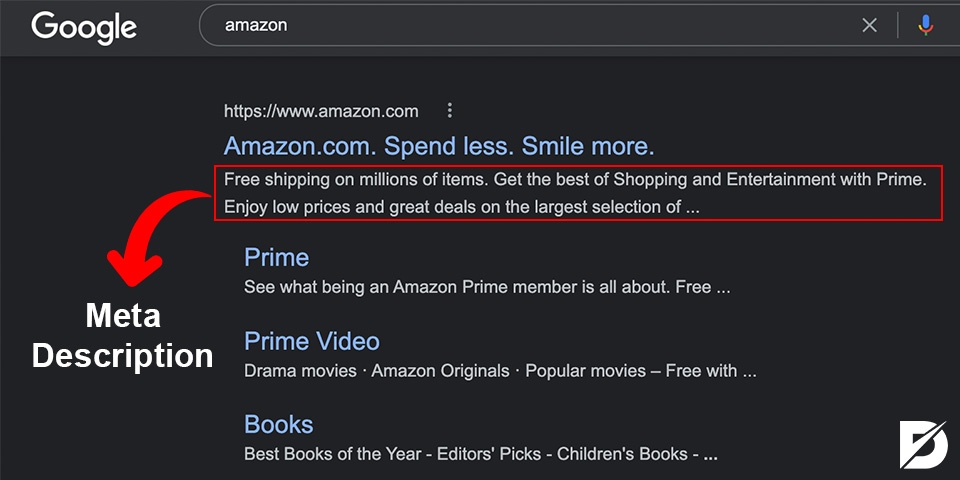
You need to create a short, clear, and persuasive meta-description that summarizes your content. In this section, you should provide strong calls to action.
Include the focus keyword you are targeting in your content in the meta descriptions as well. In this way, users can understand that you will provide content related to the relevant keyword. But put your keyword in the meaningful text. Avoid meaninglessly passing keywords one after the other in the meta description section.
Is your Meta Description interesting?
Meta descriptions must be able to convince users. Therefore, it should consist of interesting expressions. At the same time, it must contain expressions that will activate users along with the focus keyword.
Users may decide to click on your content by reading your meta descriptions in search results. With this feature, a strong CTA can maximize the click-through rate on your website’s search results page.
Is the keyword included in the URL?
One of the most important on-page SEO criteria for your web page is the URL structure. Your URL must be a certain length. At the same time, the URL should not contain special characters other than dates, numbers, and hyphens. In this way, you can create an SEO-compatible URL.
Your keyword should appear in the URL as well as in fields such as title and meta description. The URL should consist of 3-5 words at most. Only the focus keyword should appear in the URL. Using lots of keywords is the wrong strategy.
Your focus keyword should be near the beginning of the URL. So, try to use the keyword at the front of the URL as much as possible.
Is the URL structure poor?
The SEO-friendliness of your web page’s URL structure is an important ranking signal. The URL helps both users and search engine bots understand what your page is about. One of the most important mistakes made in the URL creation process is including long URLs.
The URL of a page should be as short as possible. If you create long URLs, they will be difficult to remember. At the same time, research shows that short URLs rank higher on Google search results pages.
Depending on all these reasons, create short URLs consisting of 2-3 words. Also, be sure to include the focus keyword in the URL.
Have you included the primary keyword in the first paragraph?
When Google bots enter your website, they first check the first 100 words of your content. By checking this section, they try to understand what your content is about and what words it targets.
Be sure to include the focus keyword in the first paragraph so that bots visiting your web page understand which word you focus on. SEO experts say that you should include the focus keyword in the first 160 words.
Be sure to include your focus keyword in the first paragraph, in the first 2-3 sentences if possible. Some SEO experts say that it would also be beneficial to start the content directly with the focus keyword.
As a result, use your keyword in the first paragraph, and do not forget to mark it in bold.
Is keyword density more than it should be?
In the past, when keyword cannibalization was done on a page, Google could rank that page first. Google’s algorithm has improved, and competition in the SEO field has become stronger. Therefore, the main keyword and auxiliary keywords should be at a certain density in the text.
If you cannibalize keywords in your content, your content will be seen as spam, and Google will rank your content at the bottom. Therefore, you should use your keywords at a certain density.
The most suitable for SEO is to use 1.5-2% keywords in content. In other words, the keyword should appear at least once and at most two times in every 100 words. In a text of 1000 words, the keyword should appear at most ten times.
Your keywords should be distributed homogeneously in the text. The keyword must be included in the first 160 words, in the middle, and in the last paragraph of the text. Additionally, keywords should be written in bold at least once.
Do you include LSI keywords on the page or content?
LSI are help keywords and phrases that are related to your main keyword. When searching on Google, users can also search using different keywords on the relevant topic other than your main keyword.
If you want to target users on a wider base, you should use LSI keywords in the title and content. When performing keyword analysis, identify other related keywords along with your main keyword.
Use LSI keywords in various places in your text to ensure that your page ranks for these words. You can also show other words related to the focus keyword in bold in the content.
Google Trends, Google Keyword Planner, Semrush, and Ahrefs keyword analysis tools help you discover LSI keywords.
The Content
One of the most important elements for a web page to perform well is content. First of all, you need to create quality content. Your content needs to match users’ search intent. It should also give readers information on all the topics they are looking for.
Your content should be of sufficient length. The content should be at least 400-500 words. The length may also vary depending on the topic and the content created by competitors. The right keywords should be used in the content, and readability should be high.
The title structure of the content on your website must be correct, and the content must be readable on both mobile and desktop devices.
Quality content should also include listings. One of the most important issues is that the content is original. Content containing plagiarism is placed directly at the bottom of search engines. Therefore, to improve your on-page SEO, you should create SEO-compatible, quality, and interesting content.
Is your content original?
You must ask yourself a question while creating your content. This question is how to create higher quality and valuable content than existing content on this subject. This way, you may create more quality and prominent content than your competitors’ content.
There are two factors many businesses have ignored in this regard. The first of these is the user experience. The second is the support of the contents with visual elements. Many sites create pages and content by ignoring the user experience. Website owners are reluctant to invest in page and site design. Likewise, they ignore supporting the content with pictures, videos, or graphics. At this point, pay attention to these two points to stand out from your competitors. This way, you may get a good ranking with your content.
Are there spelling and grammar errors in your content?
In order for content to be of high quality and readable, there must first be no spelling and grammatical errors. Google states in its Search Quality Assessment Guidelines that spelling and grammatical errors should not be included in content. Users do not want to read content with many errors and do not trust your brand.
Before sharing the content on your website, you can read the content yourself to evaluate the spelling and grammar. You can also use a grammar checker tool to be on the safe side. There are paid or free grammar-checking tools for this.
Have your content written by an experienced content writer. At the same time, focus on producing content that is perfect in terms of grammar and spelling errors. Make sure there are no punctuation errors in your content.
Is the length of your content sufficient for SEO?
For content to be strong in terms of SEO, it must be long enough. Search engines are more willing to list long content at the top. Content must consist of at least 500 words. The ideal length can be considered between 1000-1500 words.
Before writing content, you can review competitors’ content lengths to determine adequate length. The ideal content length may vary depending on the topic and competing content. While 300 words of content is considered long for one topic, 2000 words of content may be insufficient for another topic.
Extending your content unnecessarily would also be the wrong strategy. Therefore, create content that has subject integrity and includes all the details about the subject it describes. You can determine the ideal content length by examining your competitors on the first page for the relevant keyword. At the same time, one of the SemRush tools will suggest the minimum content length you should write when you enter a keyword.
Is your content interesting?
People need to read your content before they act. If users find your content interesting and adequate in terms of SEO, that is a positive sign for your page. Your bounce rate will decrease. If you have done a good job, the searcher will take action on your site. You may perform the operations listed below to make your content interesting.
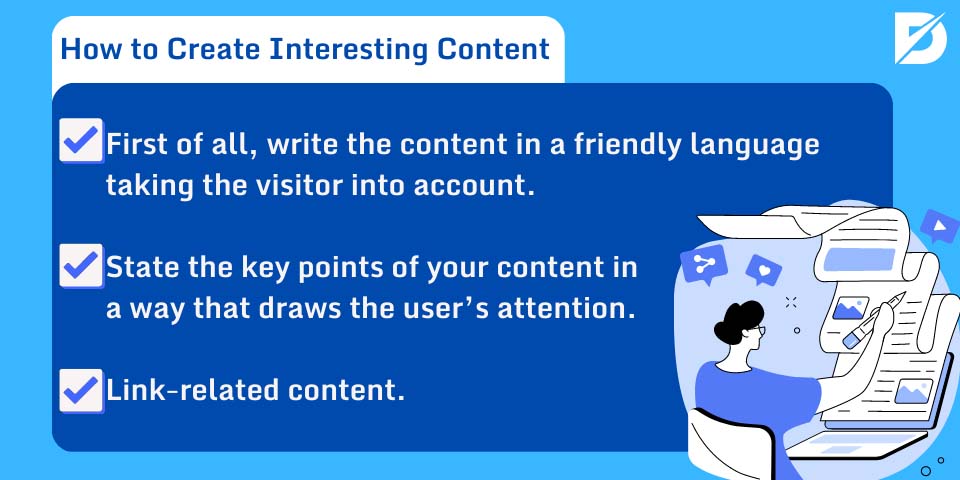
- First of all, write the content in a friendly language taking the visitor into account.
- State the key points of your content in a way that draws the user’s attention.
- Link-related content.
Does your content contain long paragraphs?
The readability of content is very important for SEO and users. At this point, paragraph structure is very important for the readability of content. If your content contains long paragraphs, users may find it difficult to read.
It is very important that paragraphs in content are short. For this, paragraphs should be between 50-100 words. When paragraphs of content are short, they can also be read on mobile devices. Short paragraphs are also important to make your content readable on mobile screens.
You can also use listing contents where necessary to make paragraphs more readable. In this way, you can make your content more readable.
Do you include subtitles in your content?
One of the most important elements in on-page SEO is improving the user experience on the page. Subtitle and heading tags are very important to increase user experience on your website. For this, you can create H1, H2, H3, and H4 tags on your website.
First of all, the main title on your website should be given with the H1 tag. Then, use at least three subheadings as H2. You can evaluate the headings under H2 as H3. Also, you can use H4 headers.
You should establish a logical hierarchy of your content using heading tags. In this way, your subheadings are clearly understandable and reveal the structure of your content.
You can also add a table of contents to enhance the user experience. To achieve this, you can use table of content plugins on WordPress sites.
Do you use keywords in subheadings?
It is also very important that your keywords appear in the titles. It allows users and search engine bots to understand content quality. Your main keyword should be included in the main title and subheadings.
If your main keyword cannot be included in the main title, it must be included in the subheadings. Also, use auxiliary keywords in subheadings. Additionally, include different variations of your keyword in the subheading.
In this way, you can rank for more words and optimize your content in the best way. Since it is not enough to use your main keyword alone in the main title, you should also use its different variations in subheadings.
Does your content contain lists or rankings?
You should use list and sorting content in appropriate sections for the readability of your content. Users can read the list contents more easily while reading the contents. When producing your content, you should think like the reader and find out which sections it should be included in.
To ensure content readability, create a list of content and try to include a list of content in each content. However, do not create all of your content from list content. Before the list content, be sure to include an introduction and transition paragraph under the title.
Is your content up-to-date?
In order for content to be read by users and to be positioned at the top of search engines, it must be up-to-date. One of the most effective strategies for strong on-page SEO is to make sure your content is up-to-date.
Check the updates of the information on your page at regular intervals. If information about your content changes, add the updated information immediately. In this way, you can ensure that your content always ranks well.
You can always strengthen your existing content with a strong SEO strategy. Updating and strengthening content allows you to improve your current SEO ranking further.
Visual Content and Elements
If you want to strengthen your on-page SEO, you also need to optimize your images. First of all, every web page should have quality, sufficient size, and relevant images. You can strengthen the readability and aesthetic structure of your web page by using a few images.
Your images must be in the correct formats and optimized for SEO. An image should not slow down the opening speed of your web page and should have an alt tag. By using alternative text, you can also ensure that search engine bots understand the image and rank it correctly.
You can use many paid and free tools to optimize images. With proper optimization, you can also rise in Google Images rankings.
Do your pages have more visual content than your competitors?
The length and quality of content on your website should be better than those of competitors. This also applies to visual content. If there are more images on your website than your competitors, this will be positive for SEO.
You should create unique and high-quality images to strengthen the performance of your web page. Images must have alternative text, and at least 2-3 images must be included on one page.
You can enrich your website with different multimedia content such as graphics, PDFs, videos, and images. You should use higher quality and better images than your competitors. Thanks to graphics, you can get more backlinks and strengthen your page.
Are the visuals you use high-quality?
Using visual elements alone is not enough. Therefore, the visuals you place on your pages must be of high quality. You may use paid or free tools for this. Also, you may get professional support from experts. In both ways, you can create high-quality visuals. However, it doesn’t mean that you should use big files. When you use high-quality visuals, file sizes will inevitably increase, which can cause a slow load. So, you can use the best combination for file size and quality. In this way, you will provide a better user experience.
Are the visuals you use appropriate sizes?
Visual dimensions are also important for a good user experience on a web page and for the design to be SEO-friendly. It is negative if the images on your page are too large or too small.
It is very important to adjust image sizes according to the flow of your content. Especially in the mobile experience, visual dimensions should be adjusted to fit the screen. If your image size is too large, all you need to do is compress the image.
You can use paid and free tools to reduce the size of images. In these tools, you must reduce the size of your image and maintain its quality. Make sure that the image quality is preserved in the reduced image size.
Are the visuals you use compressed?
It is important that the images on your website are of high quality. Users may not want to spend time on your website if there are poor-quality images. Don’t let your website’s page speed decrease while improving the quality of an image.
If you want to maintain the quality of your website without reducing its speed, you can compress your image. There are some tools you can use to compress the image. You should use a tool that preserves the quality of the image while compressing it.
If the image quality does not deteriorate when you compress your image, the page speed will not slow down, and the images on your website will look more aesthetic.
Are the file names of the images you use descriptive?
In order for search engine bots to understand the images used on your website, the file name of the images must be descriptive. Google recommends using descriptive filenames for images.
When saving your images to your device, you must give a file name related to your content. First of all, the image name should consist of the main keyword and auxiliary keywords of your content.
If you show a descriptive name in the images and include keywords, search engine bots will recognize the image for the relevant keywords, scan it correctly, index it, and rank it.
Google does not use image file names as a direct ranking signal. However, use descriptive file names so bots can understand your image. Yandex uses file names directly as ranking signals.
Do you use descriptive subtags in the visuals you use?
If you use an image on your website, users will understand it by looking at the image, but you need to give them a clue so that search engines understand your image. Google bots use alt tags to understand what the image is about.
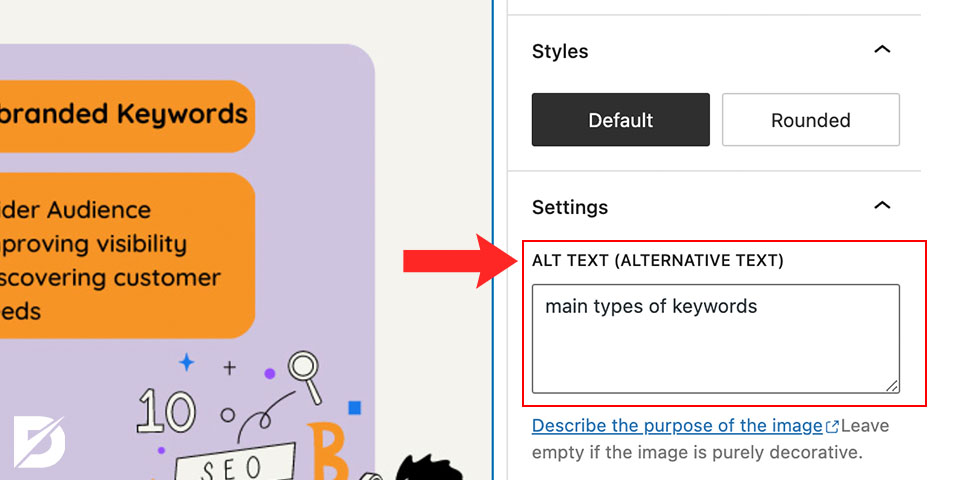
In order for an image to be understood and ranked correctly by Google, it must have an alt tag. You should use descriptive alt tags so that the search engine understands and ranks the image correctly.
Google recently changed the balance by introducing a metric called next-paint engagement (INP) to track page experience. INP stands out as an empirica...
People turn to podcasts to get daily information, have fun and spend time. The number of people who want to discover new podcasts is increasing day by...
With descriptive alt tags, bots crawl your website and rank it for Google Image searches using the right words. Alt texts must contain focus keywords to be understood correctly. The name of your file must also be relevant and compatible with the alt tag.
Is the visual content you use relevant to the keyword?
You can use images with different extensions, such as PNG, JPEG, or GIF, on your website. When using your images, you should make sure that they are relevant to the content.
If you use an image that is unrelated to the content on your web page, user experience may be negatively affected. Therefore, never forget to make sure that the visual is appropriate for the purpose and content of the content.
If your website has content about chair repair, a dog picture would not be appropriate.
Links
Link structure is also important to strengthen SEO on your website. It is necessary to evaluate the internal and external link structure of your website separately.
First of all, in order to provide a better user experience on your website and keep visitors longer, it is necessary to provide links between relevant pages. Do not forget to include an average of 3-4 links on a web page to other relevant pages on your site.
In order for your web page to be accepted as an authority, it must be linked from other sites, or your site must link to other sites. For this reason, you should also establish a good off-site link structure on your website.
Do your pages have internal links?
You should use internal links to strengthen the on-page SEO structure of your website. Internal links primarily provide a good navigation experience among relevant links on your website. At their most basic, internal links improve user experience.
You can build authority if your website has a strong internal linking structure. Users who enter your website visit relevant pages, and the bounce rate on your website will also be positive.
Internal links also make it easier for search engine bots to discover, crawl, and index other pages using links. In this way, more web pages on your website will be indexed in a short time, and your crawling budget can also be optimized. In order for your website to be positively affected and the page experience to be strengthened, you need to create a strong internal link structure.
Do you use breadcrumbs?
It is very important to use Breadcrumb on your website. It is very important to develop a breadcrumb strategy, especially if you have a very large website with many pages.
Breadcrumbs positively impact the user experience on your website. When you use Breadcrumb, users can easily navigate between pages even though they are deep into your website. Moving from subcategories to main categories can be done with a single click. You should definitely use breadcrumbs, especially on e-commerce sites.
Are your internal links useful?
You need to create some strategies when using internal linking on your website. When building internal links, don’t just focus on improving your rankings.
The main purpose of internal links on a web page is to provide visitors with a good user experience. It should be aimed at users who want to access other pages related to the content. Since Google attaches great importance to user experience, it wants the internal link structure to add value to the user.
The internal links you use should link to relevant and valuable pages. If you have other content on a subject that you mention occasionally on a page, you should provide a link that directs users to this page. For internal links, you can provide a direct link or use an anchor text.
Do your pages have external links?
Your website should have external links as well as internal links. You should link to a source that you think is reliable and is related to a topic you mentioned in the content.
If you link to a quality and reliable page on your website, this will ensure that your page is evaluated as an authority by users and search engines. In this way, you can contribute to the ranking of your website.
External links may also include links from other websites to your website. If a website with high authority links to your page, this shows that your website is authoritative and trustworthy. Therefore, provide external links to quality websites and ensure that strong external sources link to your website.
Are there broken links on your pages?
Search engines attach great importance to user experience. Therefore, you should create a strong user experience on your website. Visitors will not be happy if there is a broken link when they click on your page.
Broken links on your website will negatively affect the user experience. So, identify broken links on your website and make the necessary corrections. You can permanently redirect broken links or delete them from your entire website.
You can use different tools such as Screaming Frog, SEO Spider, and Semrush analysis tools to find broken links. Broken links negatively affect your site’s authority. Therefore, you need to identify and fix it as soon as possible. Also, periodically look for broken links on your website and fix the links you detect.
User Experience (UX)
The most important point that Google pays attention to in ranking is to provide the most relevant content to the user. We can say user experience is an important ranking signal.
You should optimize the user experience well and satisfy the users who come to your website. First of all, your web page needs to open in less than 3 seconds. At the same time, your page must be mobile-compatible for mobile users.
Try to avoid pop-up ads on your page as much as possible, as they negatively affect the user experience. Additionally, it should have a modern and useful design. At the same time, a user who logs in to your page must like your page and want to share it. Put yourself in the user’s shoes and design a page accordingly.

Do your pages open in less than three seconds?
If you are going to optimize user experience on your website, you should focus on page opening speed. Among the most important user experience elements is the fast opening of your page. If a web page opens slowly and takes a long time to load, visitors will leave your website. This increases the bounce rate.
If web pages load slowly when users move between pages, the user experience will be negative. Google states that a web page should open in less than 3 seconds. As this period increases, the bounce rate also increases.
If you want to improve the user experience on your website and ensure that your page ranks better, you should develop a page speed optimization strategy.
Are your pages mobile-compatible?
About 70% of web searches on the Internet are made from mobile devices. At the same time, Google takes the mobile version into account when indexing web pages. This feature is known as mobile-first indexing.
Websites that are not mobile-compatible cannot rank higher in search engine results pages. Therefore, it is a strict rule that your web page must be mobile-compatible. Since people are now searching from mobile devices instead of computers, you must add mobile compatibility to the user experience.
You can also apply responsive design to provide users with the best mobile experience. In this way, your web page can run smoothly on devices with different screen sizes.
Is the SSL certificate available?
Google stated something a few years ago. Google state that SSL certificates will be part of their algorithm. Also, it will have a ranking factor. Google Chrome now labels websites with the label secure or insecure. This tagging is a great deterrent for users on e-commerce websites. Having an insecure tag is not good. It affects both your performance in search engines and your business.
Do you include pop-up ads on your pages?
Various advertisements may appear on the websites. Website owners may want to generate income by sharing some advertisements. However, Google makes recommendations about some types of ads that affect user experience.
Google made a statement saying that ads containing pop-ups will be lower in the rankings. These ads create a somewhat negative experience for users. If there are too many pop-up ads on a page, the abandonment rate from your website increases.
When you use pop-up ads on your website, visitors should not see these ads on the first page they visit. If they encounter it on the second or third page they visit, the user experience will be more positive here.
Do your pages contain moderate ads?
The main source of income on personal blog sites or news sites is advertising revenues. Some websites place ads in a way that does not negatively affect the user experience. However, some sites place ads all over the page that users cannot easily close.
The presence of ads everywhere on the page and problems with closing them cause users to be disturbed. This negatively affects the user experience. On a web page where you place Google Ads ads, you must place the ads taking into account the user experience.
Is your website design useful and modern?
It is important to balance design and user experience on your website very well. When developing the design of your website, you should first think from a user’s perspective and design certain elements accordingly.
The design of your website should, first of all, have a modern design. At this point, you should also create a functional design. You can get professional support on improving user experience.
When users enter your website, they should first like your site aesthetically. Then, they should easily find the menus and buttons they are looking for on your website. You should plan the user experience well in web design, especially for mobile users.
Are your pages sharable?
People who visit your website and like your content may be willing to share the link to your website. Therefore, helping users who are willing to share will enable you to attract more traffic to your website.
You should put social media sharing buttons on your pages where users can share your post after seeing it. This button should be conspicuous in an accessible location. The easier you make it for users to share your content, the higher the share rate will be.
Users who like your content and want to share it with some of their friends want to spend the least amount of effort on this task. So, make it easy for them to do this by putting sharing buttons.
YMYL and EEAT Score
It is a set of criteria that real internet users use to evaluate the quality of search results. It can be explained as experience, expertise, competence, and reliability. After Google algorithm updates, the success of these updates is evaluated. Although EEAT is not a direct Google ranking factor, it is a strong player that Google takes into account in SEO.
If your website has a high EEAT score, trust in your website increases, and the conversion rate increases. That’s why you should develop strategies to increase the EEAT score on your website.
YMYL is a term that affects a visitor’s health, safety, well-being, and financial stability. Topics in this field can be listed as finance, medicine, and current events.
Incorrect financial and medical information given to the person viewing the content may cause harm to himself and other people affected by this person. Pages in these areas should also have a high EEAT score.
Do you have advisory content in health, finance, or legal issues?
Reviews of websites that offer advice on topics such as health, finance, and current events are more stringent and detailed. Especially with the Medic update that came on August 1, 2018, the auditing and SEO criteria for these sites have become even more important.
Google always wants to provide users with useful, scientific, and clear information. For this reason, websites that provide advice in the field of health and finance are evaluated negatively if they contain incorrect or unproven information.
If you have it on your website in the field of finance and health, do not forget to offer only proven and scientific information as suggestions.
More About On-Page SEO
On-Page SEO optimization is a part of On-site SEO optimization. You may use many SEO tools while doing your On-Page SEO optimization. After performing your On-Page SEO analysis, you may start optimizing. There is something you should not forget when doing On-Page SEO optimization. This is link-building. This way, you may establish a large number of links to your page. Thus, you will increase the traffic your page will receive. You should also pay attention to your site’s structured data. This way, you provide information about your page and categorize your content. It will also be useful to use schema markup for your structured data. Use Dopinger’s Schema Markup Generator to create schema markups for your content.
The shareability of your page is another factor that may increase your traffic. The ability to share your pages as blog posts means reaching more users.
Check out our on-page SEO services if you need professional help!
Conclusion of the On-Page SEO Checklist
We shared our on-page SEO guide and SEO best practices checklist today. On-page SEO optimization is very important to get a good ranking on Google. Its optimization only focuses on one page on your website. On-page SEO optimization is more than just putting keywords on the page. While optimizing On-Page SEO, you must meet many different criteria. We explained these different criteria of on page SEO audit checklist. This way, you will rank higher in search engines.
You will also be much more successful in attracting users’ attention. There are two main factors for your pages to rank better. These are On-Page SEO and Off-Page SEO. We focused on On-Page SEO techniques here. Also, we talked about some analysis and research. We hope this article will be your inspiration.
Hopefully, this checklist for on page SEO, and on-page optimization guide was helpful for you. Don’t forget to create your SEO checklist for website. On page SEO activity will open your way up!
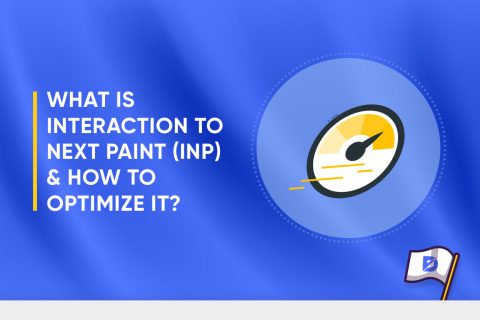
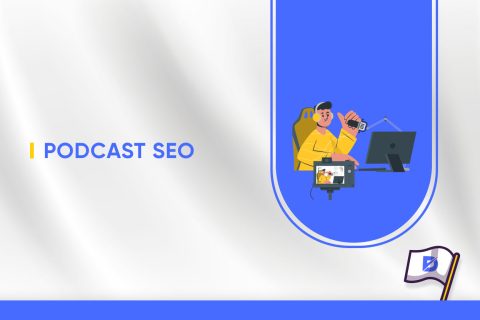

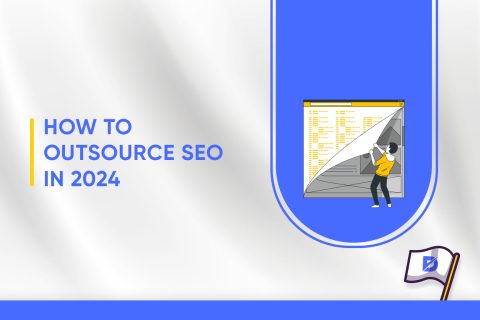
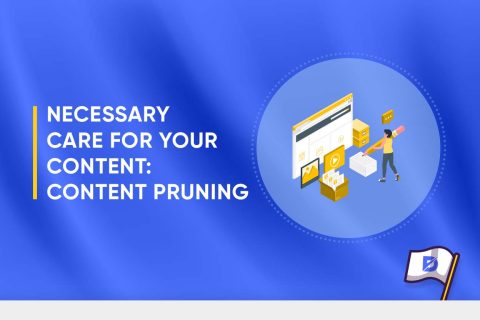
8 Comments
Fantastic article on on-page SEO! Your checklist is comprehensive and very user-friendly. I have a question about optimizing images: besides compressing them, are there any other key factors to consider for image optimization in on-page SEO? Thanks for the valuable insights!
Thank you for your kind words! Regarding image optimization in on-page SEO, besides compression, it’s important to focus on descriptive file names and alt tags. The file name should give a clear idea of what the image is about, and alt tags not only help with accessibility but also provide context to search engines. Another factor is choosing the right file format (like JPEG, PNG, or WebP) based on the type of image and desired quality.
I thoroughly enjoyed your article on on-page SEO! It’s packed with actionable tips. Can you explain a bit more about how URL structure impacts on-page SEO? I’m looking to implement some of these techniques on my own site.
Thanks for your feedback! URL structure plays a significant role in on-page SEO. A good URL should be concise, include relevant keywords, and be easy to read for both users and search engines. Avoid using lengthy URLs and ensure that they accurately describe the page’s content. Using hyphens to separate words in URLs is also a best practice, as it improves readability.
Your on-page SEO checklist is incredibly detailed and helpful. One aspect I’m curious about is how to effectively use header tags for SEO purposes. Could you provide some tips on optimizing header tags for on-page SEO?
I’m glad you found the checklist helpful! For optimizing header tags in on-page SEO, it’s important to use them to structure content clearly. Your H1 tag should include your primary keyword and give a clear idea of the page content. Subsequent headers (H2, H3, etc.) should be used to organize content in a hierarchical manner, incorporating secondary and tertiary keywords where appropriate.
While I thought I was complete about on-page SEO, thanks to this article, I realized that there were elements I did not pay attention to. Working with Checklist is really valuable.
I have been looking for a detailed on-page SEO checklist for a long time. This article will be a good resource. Can you share it as PDF?